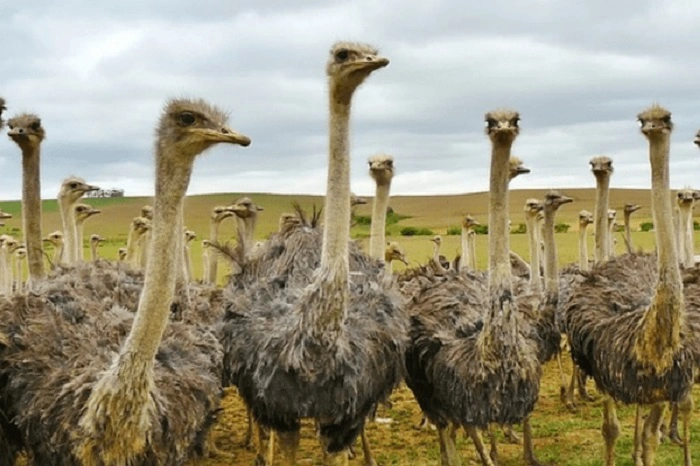When we think of birds, we often imagine them soaring through the sky — gliding, flapping, or diving from above. But not all birds are built for flight. So, what birds don’t fly? Surprisingly, there are more than 60 species of flightless birds found around the world. Some evolved without flight over time due to their environment, size, or lack of predators.
These birds walk, run, swim, or waddle — but one thing they don’t do is fly. From giant ostriches to tiny flightless rails, let’s explore the world of birds that never leave the ground.
Why Can’t Some Birds Fly?
Flightless birds have adapted to a terrestrial or aquatic lifestyle. Over time, some species evolved to survive without flight by:
- Developing strong legs for running or swimming
- Losing the keel (a bone used for wing muscle attachment)
- Growing too large and heavy to lift off
- Living in predator-free environments like isolated islands
For these birds, flight wasn’t necessary — and their bodies changed accordingly.
Most Well-Known Flightless Birds
Here are some of the most famous birds that don’t fly, along with what makes each one special.
Ostrich
Habitat: Africa
Height: Up to 9 feet
Weight: Up to 300 pounds
The ostrich is the world’s largest bird — and the fastest-running bird on land. It can sprint at over 40 mph, making flight unnecessary for survival.
Emu
Habitat: Australia
Height: Up to 6.2 feet
Weight: Up to 130 pounds
The emu is Australia’s largest bird and the second-largest in the world. While it can’t fly, it uses its powerful legs to run up to 30 mph.
Cassowary
Habitat: Northern Australia and Papua New Guinea
Height: Up to 6 feet
Weight: Up to 130 pounds
Known for its vibrant neck and helmet-like casque, the cassowary is shy but dangerous. It’s capable of strong kicks and sharp claw attacks.
Kiwi
Habitat: New Zealand
Height: 1–2 feet
Weight: 2–7 pounds
The kiwi is a small, nocturnal bird with hair-like feathers, a long beak, and an excellent sense of smell. It’s also a national symbol of New Zealand.
Rhea
Habitat: South America
Height: Up to 5.5 feet
Weight: Up to 90 pounds
The rhea resembles a small ostrich and is found in open grasslands. It uses its long legs to run and avoid danger.
Other Interesting Flightless Birds
Penguin
Habitat: Southern Hemisphere (Antarctica, South America, Africa, Oceania)
Height: 1–4 feet depending on species
Weight: Varies widely
All penguin species are flightless. They’ve traded flying for swimming, using their wings as flippers to dive and hunt underwater.
Flightless Cormorant
Habitat: Galápagos Islands
Wingspan: Too small for flight
Status: Endangered
Unlike its flying cousins, the flightless cormorant uses its stubby wings for balance while diving. It’s one of the rarest cormorants in the world.
Kakapo
Habitat: New Zealand
Weight: Up to 9 pounds
Status: Critically Endangered
The kakapo is a nocturnal, flightless parrot with a sweet musky scent. It’s one of the heaviest and rarest parrots on Earth.
Inaccessible Island Rail
Habitat: Inaccessible Island (South Atlantic Ocean)
Size: Smallest flightless bird in the world
Despite its tiny size, this bird cannot fly. It has adapted to its remote island by foraging on foot and hiding in dense grass.
Extinct Flightless Birds
Throughout history, flightless birds have evolved — and many have disappeared. Some famous extinct flightless birds include:
Dodo
Habitat: Mauritius
Extinct: Late 1600s
The dodo was a plump, flightless bird hunted to extinction by humans and introduced animals.
Great Auk
Habitat: North Atlantic
Extinct: Mid-1800s
The great auk looked like a penguin and couldn’t fly. It was hunted for its feathers, meat, and oil.
Elephant Bird
Habitat: Madagascar
Extinct: Around 1000 years ago
These were among the heaviest birds to ever live, reaching over 1,000 pounds. Their massive eggs were bigger than a football.
Are All Flightless Birds Large?
No. While many flightless birds like ostriches and emus are large, not all of them are. Kiwis, Inaccessible Island Rails, and some domestic chicken breeds have lost the ability to fly due to size, habitat, or selective breeding.
Some birds can technically fly, but only short distances — such as:
- Turkeys
- Peafowl
- Heavy domestic ducks
These birds are sometimes mistaken for flightless because their flight is limited or awkward.
Why Do Some Birds Lose the Ability to Fly?
Flight is energy-intensive. In environments where:
- Predators are few or absent
- Food is easily accessible on the ground
- Running or swimming is more useful
…birds may evolve to lose flight. Instead, they develop:
- Stronger legs
- Thicker bones
- Smaller wing muscles
Over time, their wings shrink or become less functional.
Should Flightless Birds Be Protected?
Yes. Many flightless birds are especially vulnerable to extinction due to:
- Habitat loss
- Invasive species (like rats or cats)
- Climate change
- Human hunting
Protecting them often involves:
- Creating predator-free reserves
- Breeding programs
- Wildlife conservation laws
Notable efforts include saving the kakapo in New Zealand and the flightless cormorant in the Galápagos.
FAQs
What is the largest flightless bird?
The ostrich is the largest flightless bird — and the largest bird overall.
Do all birds start out able to fly?
No. Some birds, like penguins and kiwis, are born flightless and remain that way throughout life.
Are chickens flightless birds?
Most domestic chickens can’t fly far, but they can flap enough to get over fences or into trees. Some breeds are essentially flightless.
Do penguins count as flightless birds?
Yes. Penguins can’t fly in the air but are excellent swimmers, using their wings like flippers underwater.
Why do some birds lose the ability to fly?
Flightlessness often evolves when flight is no longer essential for survival and conserving energy is more advantageous.




